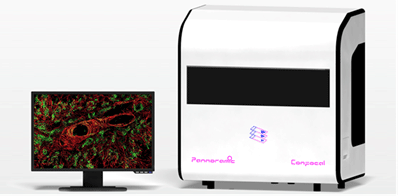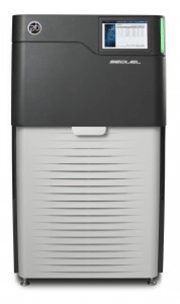Breakthrough research capitalising on genomics, animal models and cell models, is fuelling discovery of genes, proteins and regulatory RNAs that are promoters or suppressors of cancer. Converting these discoveries into actionable targets for drugs requires intimate delineation of the molecular mechanisms within which they operate, in cancer-relevant contexts.
The ACRF Cancer Discovery Accelerator, made possible by a grant awarded in 2015 to the Centre for Cancer Biology, provides access to new technologies for elaborating molecular mechanisms and discovering targetable options in cancer-relevant laboratory and pre-clinical models.
These technologies include the latest advances in genome sequencing, super high resolution microscopy, and imaging of tumours in 3 dimensions. Providing these new technologies within a single integrated facility will enhance technology uptake and ensure optimal application of these methodologies for the ultimate benefit of the end users – our cancer patients.
Equipment
Leica SP8 STED Super-Resolution System

Equipped with a White Light Laser (470 nm – 670 nm, 8 simultaneous lines possible) and 3x depletion lasers (592 nm, 660 nm and 775 nm) this imaging system based on the SP8 confocal microscope from Leica uses the stimulated emission depletion (STED) approach to achieve true super-resolution images suitable for Huygens deconvolution. The system is compatible with live cell imaging and is supplied with a heated jacket and controlled atmosphere capable of maintaining an atmosphere of 5% or 10% CO2 at 37°C.
3D HISTECH Pannoramic Confocal Digital Slide Scanner

This ultra-high quality fluorescence slide scanner uses a combination of structured illumination, confocal imaging and whole slide scanning technology to automate the acquisition of dark-field images. The system is also capable of acquiring bright-field images. Data is written to a remotely accessible location and can be viewed via a web browser interface. CaseViewer software is locally hosted for advanced processing.
Pacific Biosciences Sequel System
The Sequel System long read lengths (>20 kbp). The Sequel System is ideal for projects such as rapidly and cost-effectively generating high-quality whole genome de novo assemblies, full length mRNA sequencing, characterization of genetic variation, epigenetic studies and targeted sequencing.
 Features of the Sequel system include:
Features of the Sequel system include:
- Intuitive run setup tools
- Workflow optimization tools
- Error-proof instrument loading
- Robotic workflow management
- Run size flexibility – from 1 to 16 SMRT Cells per run
- Run time flexibility – from 30mins to 6hrs per SMRT Cell.
Facility Personnel
Director
Strategic Lead (Imaging)
-
Prof Michael Samuel
8302 7990
Michael.Samuel@unisa.edu.au
Imaging Facility Manager
- Dr. Makoto Kamei
8302 9021/8302 7469
Makoto.Kamei@unisa.edu.au
Genomics Manager
-
Rob King
8222 3966
Rob.King@sa.gov.au
Bioinformatics
-
Dr. Emily Hackett-Jones



